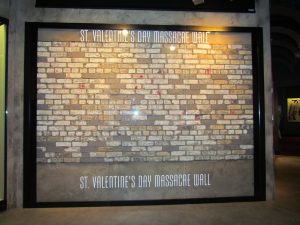The St. Valentine's Day Massacre occurred in Chicago during the Prohibition era on February 14, 1929. It is one of the most notorious events in the history of organized crime and is often associated with Al Capone, the leader of the infamous Chicago Outfit.
In a Lincoln Park neighborhood garage at 2122 N. Clark Street, four men, two of whom were dressed as police officers, lined up seven members of the North Side Gang led by George "Bugs" Moran. The gang members were shot to death by the four men using tommy guns.
The St. Valentine's Day Massacre, as it came to be called, shocked the nation, highlighting the brutality of organized crime and the inability of local police to combat the problem. The incident also led to public pressure to end organized crime, leading to improved enforcement and legislation. It also left a lasting legacy in the history of Chicago and organized crime.
Though no one was ever convicted for the murders in the St. Valentine's Day Massacre, Al Capone was suspected of ordering the attack due to the power struggle between the Chicago Outfit and the North Side Gang.
Here are a few intriguing reads that offer perspective on the St. Valentine's Day Massacre and shed light on organized crime in Chicago during the Prohibition era.
The St. Valentine's Day Massacre offers a detailed account of the St. Valentine's Day Massacre and its significance in the history of organized crime, particularly its effects on Al Capone.
Al Capone and the 1933 World's Fair, penned by historian William Elliott Hazelgrove, explores the broader context of Prohibition-era Chicago and how the St. Valentine's Day Massacre contributed to the downfall of organized crime.
Get Capone focuses on the life and criminal career of Al Capone, including the events leading up to and following the St. Valentine's Day Massacre.
Though the Valentine's Day of 1929 was overshadowed by acts of violence, February 14 continues to represent romance and love. How do you celebrate Valentine's Day?



Add a comment to: Books About the St. Valentine’s Day Massacre on Chicago’s North Side